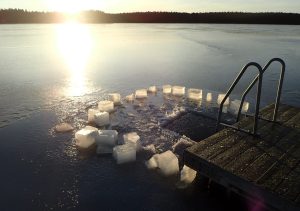A drop of happiness!
Sandarne, February 14, 2023
About 7 years ago, Lotta and I began to increasingly winter swim at the edge of the ice in the outer archipelago and a few weeks later in an ice hole in the inner archipelago, partly inspired by the fact that we had started cold-water swimming in the sea with wetsuits as part of our everyday adventures.
We quickly realized that winter swimming, both with and without wetsuits, gave an incredibly strong experience with a positive feeling throughout the body. Soon, it became a habit to occasionally cut a hole in the ice on weekends, take a dip, quickly get dressed, and then run home with some kind of endorphin rush over the ice.
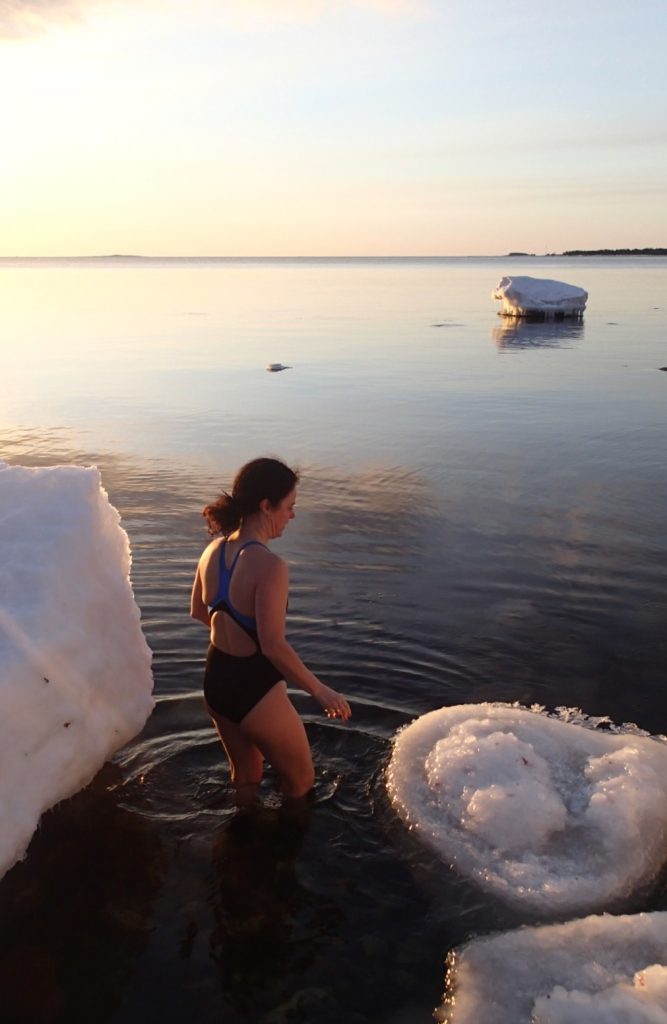

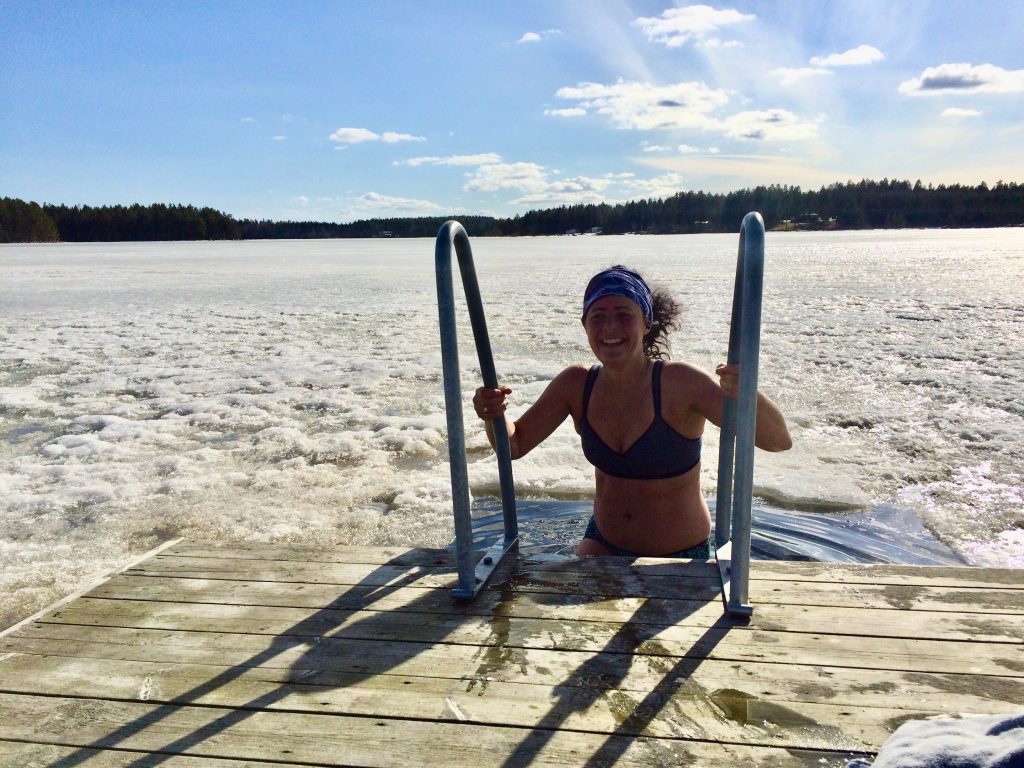
To get to winter swimming, sometimes a little preparation is needed if you don't have access to an ice hole or open sea. Now I have seen that there are large ice saws to buy that, in combination with an ice drill, solve the problem.
When we started winter swimming, I used an old chainsaw to cut holes in the ice. At sea, where the water level often varies, several layers of ice are almost always formed. Sometimes there are two layers, sometimes even three layers. First, I cut through the first layer of ice with the chainsaw. When it was double ice, there could be some decimeters of water underneath, and then we chopped through that layer with an axe, splashing water everywhere. When it was most difficult, there were three layers of ice, where the last layer, of course, was under water. Then we used an ice chisel to break through it and reach the water. An ice chisel is like a kind of ice pick with a long wooden handle.
We have about 1 kilometer, that's about 0,6 miles, from home to the jetty at Stenö Seaside, where it can be very beautiful to winter swim when the afternoon sun shines on the ice over the bay. Usually, we run there and wear a backpack with a towel and a change of clothes. I find it best to keep wool socks and a hat on when I climb down the ladder to dip, at least if it's really cold, and it's also nice to have a small towel to stand on when changing.
In recent years, Stenö Seaside has set up a small water pump by the sauna jetty to keep the ice hole open throughout the winter, which makes winter bathing much easier. However, it may be slightly less rewarding, as the effort required in the past made winter bathing a bit more exclusive.
Last weekend, we went long-distance skating in Stenö archipelago. The ice has been fantastic on the sea for the past two weeks, and you don't go long-distance skating whenever you want, you go when there are good ice conditions. On our way back home with our skates, Lotta suggested that we could stop and take an ice bath at the sauna jetty in Stenö. My immediate response was that I didn't want to, that it was too much hassle and too tiring. I came up with all sorts of arguments, such as the fact that we didn't have towels and swimwear with us, that we would have to skate home with half-wet socks and base layers, that we would get cold. Fortunately, I managed to gain some perspective on my negative response and realized that it didn't align with my values. I didn't want to miss the opportunity for a nice experience, something that stood out and was a little extra memorable, just because I was comfortable. If there's one thing I want to stand for, it's to dare to choose the uncomfortable, as the contrasts in life are what create emotions and experiences that make life richer.
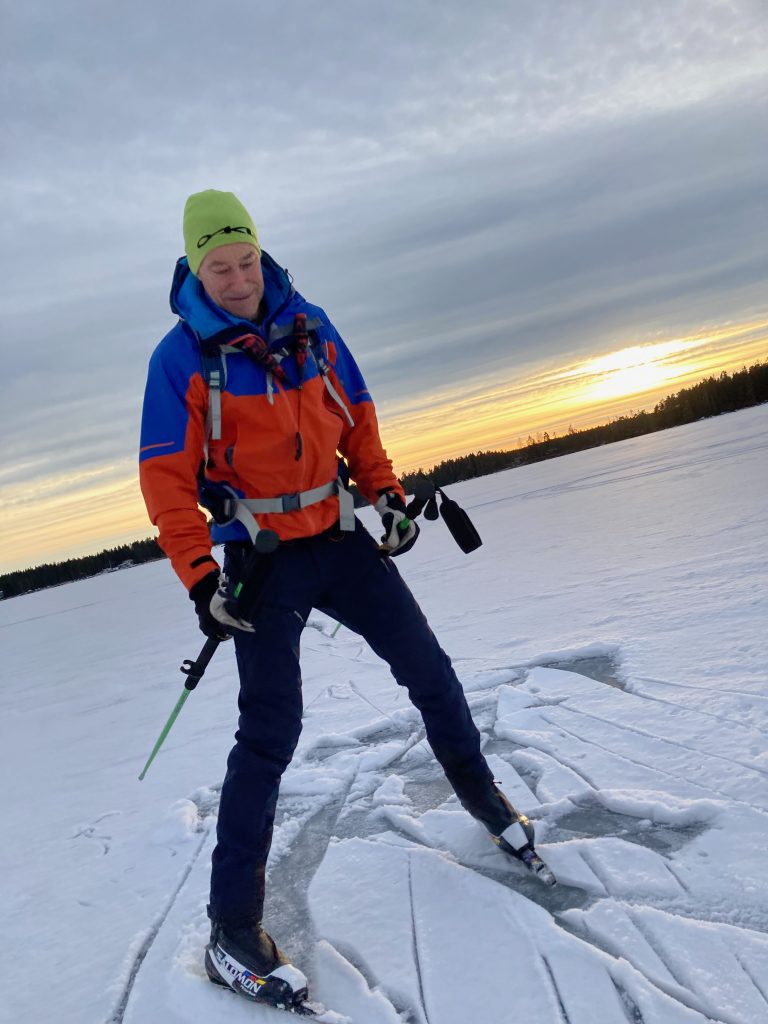
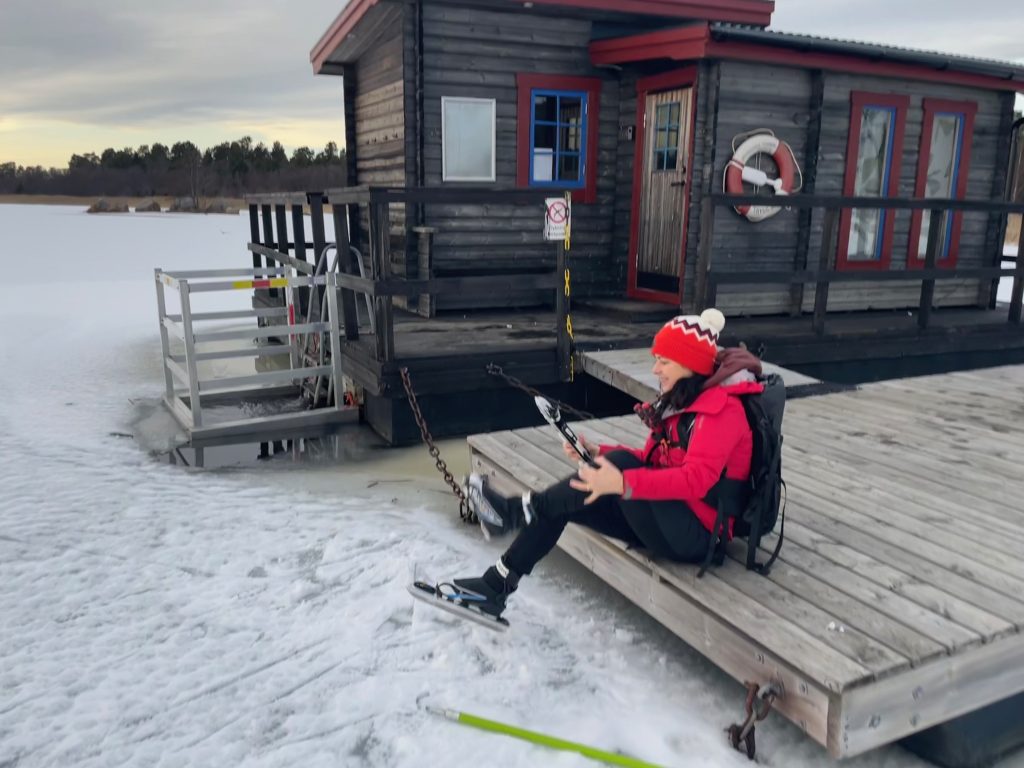
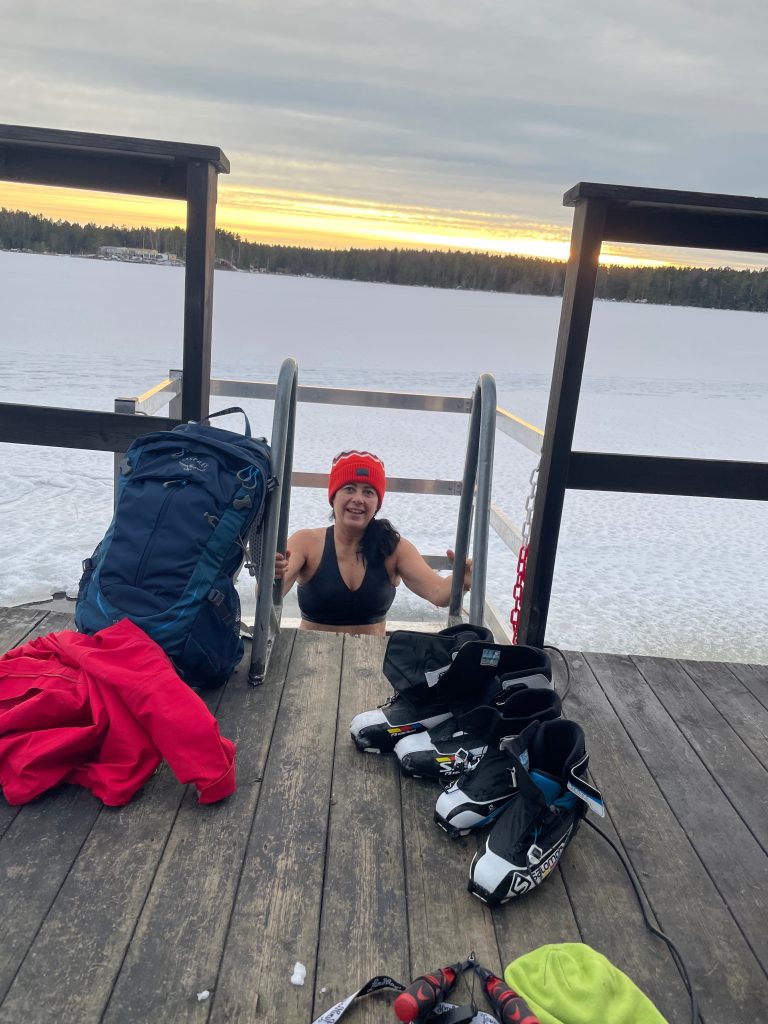
The result was that we stopped, took off our gear and several layers of clothing, bathed, air-dried for a while, put on slightly damp clothes, and skated back home a bit cold but happy, agreeing that we had actually gotten a simple, memorable everyday adventure in the process.
Winter bathing, sauna bathing, and the combination of both are a long tradition and strongly associated with health and well-being, especially in the Nordic countries and perhaps most of all in Finland.
In a review article from 2014, Mooventhan and Nievithita compiled research on the effects of hydrotherapy, which includes cold and hot water, ice and steam baths, etc. They report, among other things, that regular winter bathing reduces self-reported scores indicating tension, fatigue, memory problems, and negative mood states, and the more baths taken, the lower the scores, meaning fewer stress symptoms were reported. Winter bathing also increased scores on vitality, decreased pain, and generally increased well-being. Exposure to cold water activates the stress system, partly by releasing beta-endorphins which produce a feeling of euphoria, pain relief, and activate the immune system, and partly by increasing noradrenaline levels in the blood and brain synapses.
Noradrenaline drives the stress system and makes the body and brain alert and prepared. Since this is a rapid stressor that quickly disappears, it functions like exercise, where the stress system is first activated and then deactivated to a lower level than before. In addition, there is a long-term training effect where the stress system becomes more resilient, both for winter bathing and other stressors, just as has been shown with physical activity.
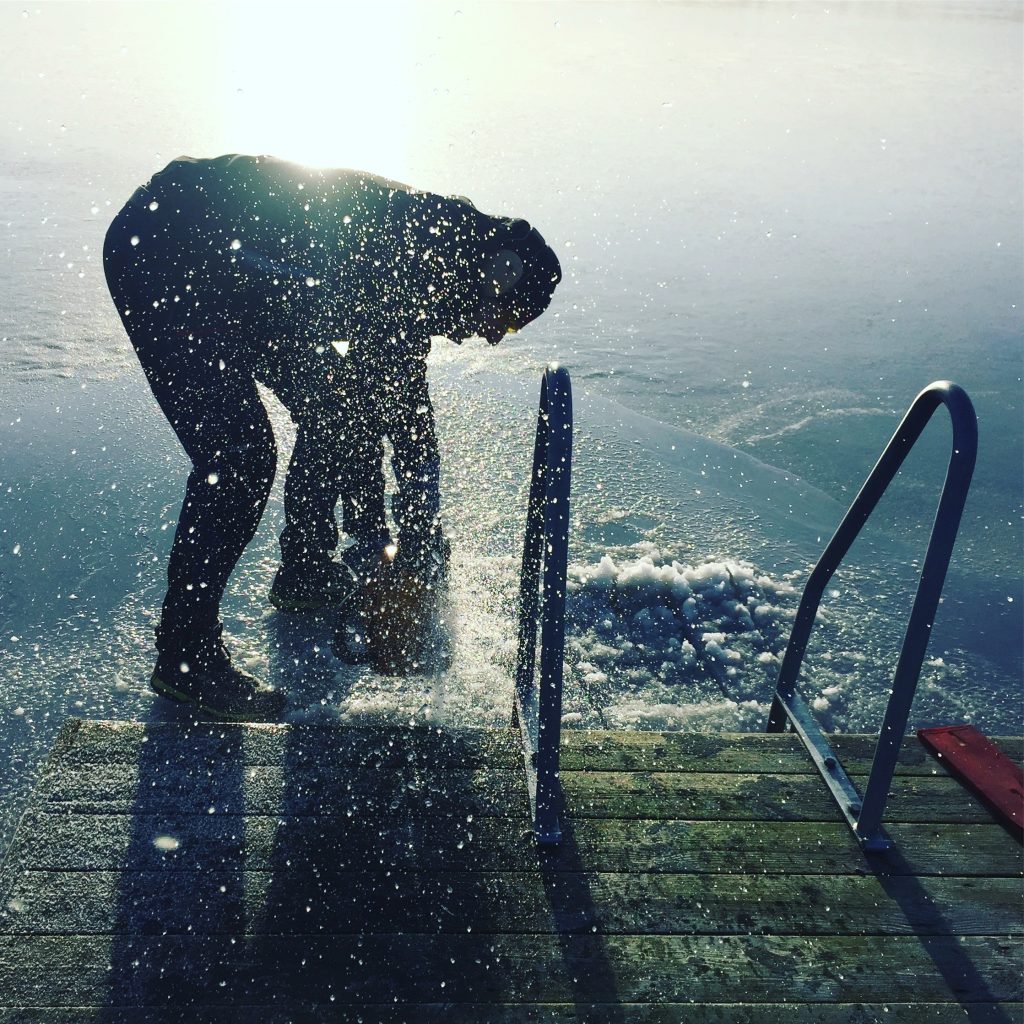


I can see many benefits of winter bathing, such as experiencing nature strongly, with presence often becoming total as the cold more or less forces us to be aware in the moment and let go of all thoughts related to rumination, demands, musts, and worries. Winter bathing is a kind of short-term positive stress, which increases resistance to long-term stress, recovery, presence, well-being, and self-confidence. For me, it gives a mental and physical kick, a tangible experience of presence that often becomes one of the best moments of the week - a drop of happiness!
